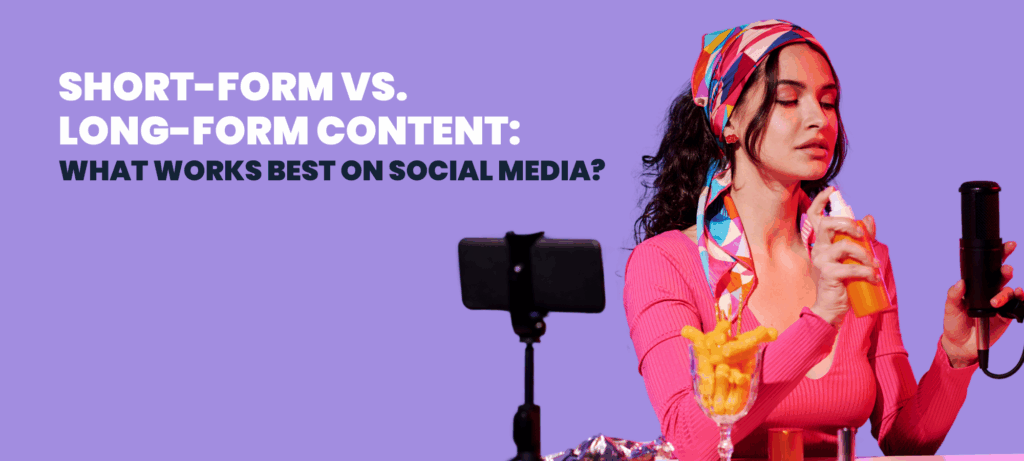In the fast-paced world of social media, content is king—but which type reigns supreme? Short-form and long-form content both have their place, but their effectiveness depends on the platform, audience, and marketing goals. While short-form content captures quick engagement with bite-sized videos and posts, long-form content builds deeper connections and authority.
If you’re struggling to decide which format works best for your social media strategy, this guide will break down the pros and cons of each and help you determine the best fit for your brand.
What is Short-Form Content?
Short-form content is any social media post that is quick to consume, typically under 60 seconds for videos and a few sentences for text-based content. It includes:
- TikTok videos & Instagram Reels (15-90 seconds)
- YouTube Shorts (up to 60 seconds)
- Tweets (X posts) (280 characters or less)
- Instagram Stories and Snapchat Snaps (up to 15 seconds per story)
- Memes and GIFs
Pros of Short-Form Content
✅ High Engagement: Quick videos and posts grab attention fast, making them ideal for increasing views, likes, and shares.
✅ Platform Preference: Algorithms favour short-form content, especially on TikTok, Instagram Reels, and YouTube Shorts.
✅ Easy to Create & Consume: Requires less time to produce and keeps users engaged without a long commitment.
✅ Viral Potential: Short, catchy content has a higher chance of going viral due to easy sharing.
Cons of Short-Form Content
❌ Limited Depth: Hard to provide in-depth information or build deep audience connections.
❌ Short Lifespan: Content can fade quickly in fast-moving feeds.
❌ Harder to Monetise: Platforms like YouTube prioritise longer videos for ad revenue.
What is Long-Form Content?
Long-form content includes more detailed and in-depth posts that provide value over time. This type of content includes:
- YouTube videos (10+ minutes)
- Blog posts & LinkedIn articles (800+ words)
- Podcast episodes (20-60 minutes)
- Longer Instagram & Facebook captions (several paragraphs)
- Live streams & webinars (30+ minutes)
Pros of Long-Form Content
✅ More Value & Authority: Longer content allows for detailed explanations, storytelling, and expertise-building.
✅ Better SEO & Discoverability: Search engines and platforms like YouTube rank long-form content higher.
✅ Higher Retention & Trust: Longer content builds stronger relationships with audiences.
✅ Monetisation Opportunities: YouTube and blogs offer better-earning potential with long-form content.
Cons of Short-Long Content
❌ Requires More Time & Effort: Creating and consuming long-form content takes longer.
❌ Lower Engagement on Some Platforms: Many users prefer quick content, especially on TikTok and Instagram.
❌ Not Always Mobile-Friendly: Long reads or videos may not hold attention on mobile devices.
Which Works Best for Social Media?
The best content format depends on your goals:
For brand awareness & virality → Short-form content (TikTok, Instagram Reels, YouTube Shorts)
For thought leadership & education → Long-form content (YouTube, blogs, LinkedIn, podcasts)
For a balanced strategy → Use both! Short-form for engagement and long-form for deeper connections.
Conclusion
There’s no one-size-fits-all answer to short-form vs. long-form content. To succeed on social media, consider your audience, platform, and marketing goals. Short-form content is perfect for quick engagement and viral potential, while long-form content establishes expertise and long-term loyalty.
For the best results, integrate both into your strategy—use short-form content to grab attention and long-form content to nurture deeper relationships with your audience.
HubsSpot integrates AI to analyse CRM data, such as customer interactions, purchase history, email engagement, and website behaviour, to predict which leads are most likely to convert.
The AI evaluates multiple factors, including lead activity patterns, demographic information, and past conversion trends, to assign a lead score to each prospect.





